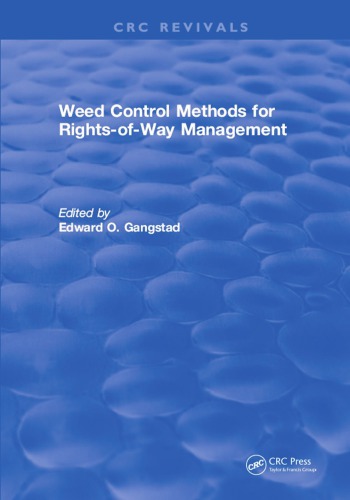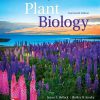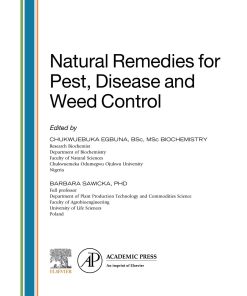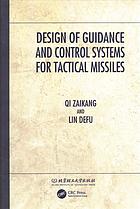Weed Control Methods for Rights of Way Management 1st Edition by Edward Gangstad ISBN 1351094610 9781351094610
$50.00 Original price was: $50.00.$25.00Current price is: $25.00.
Weed Control Methods for Rights of Way Management 1st Edition by Edward Gangstad – Ebook PDF Instant Download/Delivery: 1351094610, 9781351094610
Full download Weed Control Methods for Rights of Way Management 1st Edition after payment

Product details:
ISBN 10: 1351094610
ISBN 13: 9781351094610
Author: Edward Gangstad
This volume describes in detail methods of control and related data including (1) all vegetation on industrial sites, paved highways, and railroad ballast, (2) woody vegetation along roadsides, utility lines, and fire breaks, and (3) aquatic vegetation on rivers and stream banks, waterways, ponds, reservoirs, irrigation, and drainage channels.
Weed Control Methods for Rights of Way Management 1st Table of contents:
PART I: BASIC CONCERNS OF WEED CONTROL MANAGEMENT
Chapter 1 The Science of Weed Control
Introduction
Herbicide Hazards
Classification of Weeds
Classification of Herbicides
Hazards of Handling and Application
Warnings and Caution Statements on the Label
Required Front Panel Statements
Human Hazard Signal Word
Child Hazard Warning
Statement of Practical Treatment
Placement and Prominence
Other Required Warnings and Caution Satements
Hazard to Humans and Domestic Animals
Environmental Hazards
Physical or Chemical Hazards
Directions for Use — General Requirement
Adequacy and Clarity of Directions
Placement of Directions for Use
Exceptions to Requirement for Directions for Use
Contents of the Label
Use Classification
Public Controversy
Credibility in Dispute Resolution
Summary and Conclusions
References
Chapter 2 The Technology of Weed Control
Introduction
Plant Toxicity Studies
Animal Toxicity Studies
Field Application
Aerial Drift Control
Stable Air Drift Studies
Crosswind Drift Study
Drift Control with Rotary Disks
Drift Control with Spray Additives
Drift Control by Droplet Size Selection
Drift Control by Invert Emulsions
Bifluid System Mechanics
Chemical Dose Rate
Application-Mixing Procedure
Application Volume Rates
Equipment
Coverage
References
Chapter 3 Weed Control Authorities and Regulation
Introduction
Scope of Weed Control Problems
Federal and State Legislative Authority
Rule Making Regulations
History of the Development of Laws and Regulations
Pesticide Registration Procedures
Types of Registrations
Renewal Registrations
Amendments to Existing Registrations
Temporary Tolerance
Clearance and Labeling
Public Announcements
Control and Eradication of Weeds
Research on Weeds and Their Control
Educational Programs on Weeds and Their Control
The Federal Pesticide Act of 1978
Data Requirements
References
Chapter 4 Federal Registration and Reregistration of Pesticides
Introduction
Popular Press Interpretations
Carcinogeneses
Zero Tolerance
Zero Risk
Economic Considerations
The Registration Process
Pesticide Application
Pesticide Labels
Common Use Recommendations
Area-Specific Situations
Rebuttable Presumption Against Reregistration
2,4,5-T Dispute Resolution Conference
Summary and Conclusions
References
Chapter 5 Remote Sensing Technology for Rights-of-Way Management
Introduction
LANDSAT (Earth Resources Technology Satellite) Data
Morphological Analyses
Geographic Search and Inquire System
The Computer Listing System
Placing an Order
Application Assistance
Digital Image Enhancement System
Radiometric Restoration
Sampling Geometric Restoration
Earth Rotation Correction
Detector Misregistration Correction
Contrast Enhancement
Edge Enhancement
Synthetic Line Generation Algorithm
Film Product Generation
Skylab Data
Remote Sensing Applications Guide
Summary and Conclusions
References
Chapter 6 Environmental Impacts of Pipeline Rights-of-Way in the Coastal Zone
Introduction
General Characteristics of the Coastal Zone
Marine Environment
Open Ocean
Coastal Ocean
Estuaries
Shores—Beaches and Wetlands
Man’s Utilization of Coastal Zones
General Description of Pipeline Construction and Operations
Offshore Methods and Techniques
Construction and Burial
Pipelines — Operations and Maintenance
Pipeline Size
Inshore Methods and Techniques
General Methodology
Weighting
Pipeline Location
Corrosion
Welding
Alternatives
Description of Pipeline Construction in Marshy Areas
“Push” Method of Pipelining
“Flotation” Method of Pipelining
Construction Operations
Evaluation of Incidents of Pipeline Spills
General Characteristics of the Marshland Ecosystems
Terrestrial Ecology
Plant Communities
Sea Rims
Salt Marsh
Brackish Marsh
Intermediate Marsh
Fresh Marsh
Island Beaches
Swamps
Animal Communities
Furbearers
Other Mammals
Insects
Reptiles
Amphibians
Avifauna and Its Habitat
Permanent Residents
Winter Residents
Migrants
Aquatic Ecology
Resident Species
Semicatadromous Species
Seasonal Migrant Species
Andromous Species
Environmental Impacts of Pipelining
Physical and Chemical Effects
Canaling
Canal Erosion
Effects of Spoils
Turbidity
Chemical Changes
Changes in pH
Hydrogen Sulfide Toxicity
Dissolved Oxygen
Salinity
Additional Impacts on Water Quality
Biological Effects
Construction on Plant Communities
Oil Spills on Plant Communities
Construction on Animal Populations
Oil Spills on Animal Populations
Construction on Birds
Effects of Oil Spills on Birds
Invertebrates
Construction on Aquatic and Estuarine Biota
Salinity Effects
Turbidity and Siltation Effects
Observations and Problems
Oil Spills on Aquatic and Estuarine Biota
Finfish
Benthic Fauna
Carcinogens
Tainting
Archaeology and Historical Sites
Esthetics
Impact on Recreation
Summary and Conclusions
References
PART II: BASIC NOMENCLATURE, FORMULATION AND APPLICATION
Chapter 7 Nomenclature and Molecular Structure
Introduction
Basic Chemical Nomenclature
Herbicide Nomenclature
Carbon Number
Different Molecular Forms of the Same Herbicide
References
Chapter 8 Formulation and Handling of Herbicides
Introduction
Formulation
Water-Soluble Concentrates
Emulsifiable Concentrates
Oil-Soluble Concentrates
Powders and Pastes
Granules and Pellets
Adjuvants and Surface-Active Surfactant Agents
Purchase of Herbicides
Mixing of Spray Materials
Calculations
Tank Capacity
Water Sprays
Emulsions
Oil Sprays
Suspensions
Storage of Herbicides
Precautions
References
Chapter 9 Application Equipment and Operation
Introduction
Equipment
Hand Sprayers
Boomless Sprayers
Boom Sprayers
Mist Blowers
Special Equipment
Individual Parts
Pumps
Tanks
Pressure Regulators
Valves, Pressure Gages, and Strainers
Hose and Fittings
Booms
Nozzles
Aerial Sprayers
Dusters and Spreaders
Requirements
Oils
Emulsions
Suspensions
Operation
Regulating Volume
Regulating Droplet Size
Calibration of Equipment
Hand Sprayer
Power Sprayers, Boom Type
Power Sprayers, Boomless Type
Aerial Sprayers
Cleaning and Preparation for Storage
Preparation for Storage
References
Chapter 10 Herbicide Efficacy
Introduction
Emulsion Sprays for Summer Application
Dormant or Winter Spray Applications
Specific Applications
References
Chapter 11 Individual Stem Treatment
Introduction
Basal Frill Studies
Complete Basal Frill
Complete Frill 3 ft Above Ground
Continuous Frill
Tree Injection Studies
Dosage Experiment
Spacing of Injections
Summary and Conclusions
References
PART III: RESEARCH STUDIES OF HERBICIDE APPLICATIONS
Chapter 12 Programs of Right-of-Way Control
Introduction
Conventional Methods of Control
Highways
Railroads
Pipelines
Firebreaks
Selective Vegetation Management and Manipulation
Mechanical Control
Nonselective Herbicide Control
Selective Herbicide Control
Integrated Control
Management of Rights-of-Way for Fish and Wildlife
Summary and Conclusions
References
Chapter 13 Factors Affecting Commercial Application of Herbicides
Introduction
Foliar Spray Operations
Pellet Applications
Mixed Applications
Retreatment
Program Plan
Persistence of Herbicide Residues
Effects on Vertebrate Animals
2,4,5-T and TCDD
Herbicide Degradation
Environmental Assessment of TCDD
Summary and Conclusions
References
Chapter 14 Toxicological Significance of Rights-of-Way Control
Introduction
Oral Toxicity
Dermal Toxicity
Inhalation Toxicity
Chronic Toxicity
Measuring Toxicity
Metabolism and Excretion
Solubility and Hydrolysis
Metabolism in Plants
Toxicological Testing
Environmental Contamination
Lable Warning Statements
Hazard of Use
Industrial Exposure
Target Species
Summary and Conclusions
References
Chapter 15 Ecological Significance of Rights-of-Way Weed Control
Introduction
Ecological Interests and Values
Control Techniques
Programs and Cost
Summary and Conclusions
References
Chapter 16 Agronomic Significance of Right-of-Way Control
Introduction
All Vegetation
Industrial Sites
Paved Highways
Railroads
Control of Woody Plants
Foliage and Soil Applications
Larger Trees and Brush
Applications Along Roadsides and Utility Lines
Poison Ivy, Poison Oak, and Poison Sumac
Retreatment, After and Initial Clearance
Persistence of Herbicides
Contact Herbicides
Translocated Herbicides
Soil Sterilants
Specific Weed Problems
References
PART IV: AQUATIC RIGHTS-OF-WAY MANAGEMENT
Chapter 17 Management of Floating, Submersed, and Emersed Aquatic Vegetation
Introduction
Methodology
Mechanical Control
Environmental Control
Biological Control
Chemical Control
Application
Dosage Calculations
Hazards of Chemicals ,
Control of Floating Plants
Control of Submersed Plants
Control of Emersed Plants
Conditions of Application
Environmental Changes
Activities Affected
Navigation and Power Generation
Recreation
Flood Control
Drainage, Agriculture and Public Health
Fish and Wildlife Conservation
Problem Species
Problem Site and Species
Project Effectiveness
Cost and Potential Savings
References
Chapter 18 Management of Phreatophyte and Riparian Vegetation
Introduction
Pecos River Basin Water Salvage Project
Previous Clearing Methods and Activities
Nonchemical Methods
Mechanical and Chemical Methods
Previous Clearing Patterns
Cost Effectiveness of the Control Program
Interrelationship with Other Projects or Proposals
Los Esteros Flood Control Project
Other Projects
Fort Sumner Project
McMillan Delta Project
Brantley Dam and Resevoir
Carlsbad Project
Red Bluff Water Power Control District
Watershed Flood Protection
Integrated Management
Summary and Conclusions
References
APPENDIXES
Appendix A Common and Latin Names of Weeds
Appendix B Common and Chemical Names of Herbicides
People also search for Weed Control Methods for Rights of Way Management 1st:
weed control methods for rights of way management
weed control methods handbook
weed control methods handbook the nature conservancy
weed control means
weed control strategies
Tags:
Edward Gangstad,Weed Control,Way Management
You may also like…
Mathematics - Mathematical Statistics
The Bayesian way: introductory statistics for economists and engineers First Edition Nyberg
Science (General)
Natural Remedies for Pest, Disease and Weed Control 1st Edition Chukwuebuka Egbuna & Barbara Sawicka
Science (General)
Computational Intelligence and Optimization Methods for Control Engineering Maude Josée Blondin
Science (General)
Algebraic and differential methods for nonlinear control theory Martinez 3030120252 9783030120252
Science (General)
Weed Physiology – Volume 2- Herbicide Physiology First Edition Duke
Technique - Military equipment: Missiles
Design of guidance and control systems for tactical missiles First Edition. Edition Defu
Biology and other natural sciences - Plants: Agriculture and Forestry
Non Chemical Weed Control 1st Edition Bhagirath Singh Chauhan











